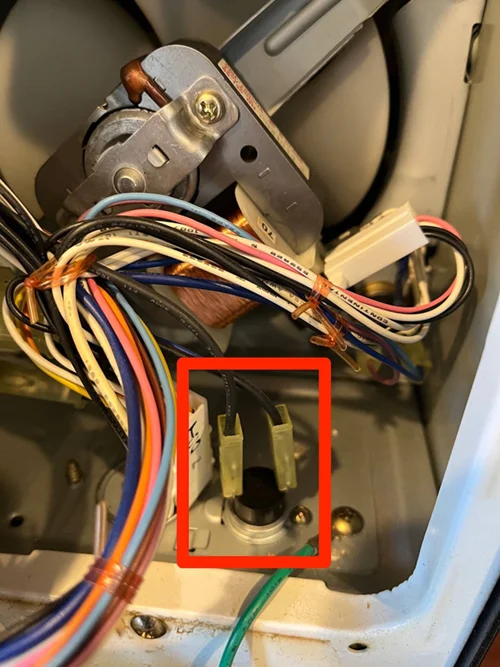This guide will help you understand the common causes of microwave circuit breaker trips and provide step-by-step solutions to troubleshoot and reliable bosch microwave repair. Safety is a priority, so we’ll begin by emphasizing safety precautions before diving into the troubleshooting process.
Common Causes of Microwave Circuit Breaker Trips

1. Overloading the Circuit
Overloading the circuit is a primary cause of circuit breaker trips. When you plug too many high-wattage appliances into a single circuit, it can surpass its capacity, leading to a trip to prevent overheating and potential electrical fires.
2. Electrical Short Circuits
Short circuits occur when there’s a breach in the circuit’s wiring, causing electricity to flow through unintended paths. These abrupt changes in the electrical flow can trigger the circuit breaker to trip as a safety measure.
Short circuits can result from:
- Frayed or Damaged Wiring: Worn-out or frayed wiring within the microwave’s power cord or plug can lead to exposed wires and short circuits.
- Faulty Microwave Switches: Microwave ovens have various switches for functions like the door latch and safety mechanisms. When these switches malfunction, they can create unintended electrical paths, causing shorts.
3. Malfunctioning Microwave Components
Internal issues within the microwave itself can also cause circuit breaker trips. These problems may not be directly related to the circuit but can still disrupt the electrical flow, leading to trips. Common component issues include:
- Damaged Power Cords: Over time, power cords can deteriorate, leading to exposed wires or loose connections, which can cause electrical problems.
- Faulty Microwave Switches: Microwaves have multiple switches to control various functions, such as the door switch, keypad switch, and safety interlocks. When these switches fail or become erratic, they can interfere with the microwave’s operation and result in unexpected trips.
- Malfunctioning Magnetron: The magnetron is the component responsible for generating microwave radiation, which heats your food. If the magnetron malfunctions, it can lead to irregular heating patterns and mid-cycle interruptions, which may eventually cause a circuit breaker trip.
Understanding these internal and external causes of microwave circuit breaker trips is essential for effective troubleshooting and prevention. By addressing these issues, you can enjoy uninterrupted use of your microwave without circuit disruptions.
Troubleshooting and Solutions
1. Safety First: Precautions When Dealing with Circuit Breaker Trips
When addressing microwave circuit breaker trips, it’s crucial to prioritize safety. Take the following precautions:
- Disconnect the microwave from the power source: Ensure the microwave is unplugged or powered off to avoid electrical hazards during inspection and repair.
- Wear appropriate safety gear: Utilize safety equipment such as gloves and safety goggles to protect yourself while handling electrical components.
- Ensure the area is well-lit: Proper lighting is essential for a thorough inspection. It helps you identify any visible issues more easily.
2. Checking for Overloaded Circuits
Begin your troubleshooting by examining the circuit in which your microwave is connected. The goal is to determine if an overloaded circuit is causing the breaker trips. Follow these steps:
- Unplug unnecessary appliances: If the circuit contains multiple devices, unplug any unnecessary appliances, especially high-wattage devices that may exceed the circuit’s capacity. This will reduce the load on the circuit and may resolve the issue.
- Distribute the load: Consider redistributing the appliances across different circuits to prevent overloading a single one.
If overloading was the cause, your problem should be resolved. However, if the issue persists, you’ll need to investigate further.
3. Investigating Electrical Short Circuits
If circuit overloading isn’t the issue, turn your attention to potential electrical short circuits. Short circuits can occur within the microwave’s power cord or plug. Here’s how to address this:
- Inspect the power cord: Examine the microwave’s power cord for signs of damage, such as frayed or exposed wires. If any issues are found, replace the cord with a new one.
- Check the plug: Inspect the plug for visible damage or loose connections. If the plug is faulty, replace it with a new one.
If resolving these external issues doesn’t solve the problem and the circuit breaker continues to trip, consider seeking professional assistance, as the problem may be internal.
4. Diagnosing Malfunctioning Microwave Components
Should external issues be ruled out, it’s time to delve inside your microwave to identify malfunctioning components that could be causing the circuit breaker trips. Here’s what to do:
- Inspect switches: Check the microwave’s various switches, such as the door switch, keypad switch, and safety interlocks. Ensure they are functioning correctly and aren’t causing unintended electrical paths. If a switch is malfunctioning, it may need to be repaired or replaced.
- Examine the magnetron: The magnetron is responsible for generating microwave radiation. If it’s malfunctioning, it can disrupt the microwave’s operation and heating patterns. To address magnetron issues, consult a qualified technician for diagnosis and potential replacement.